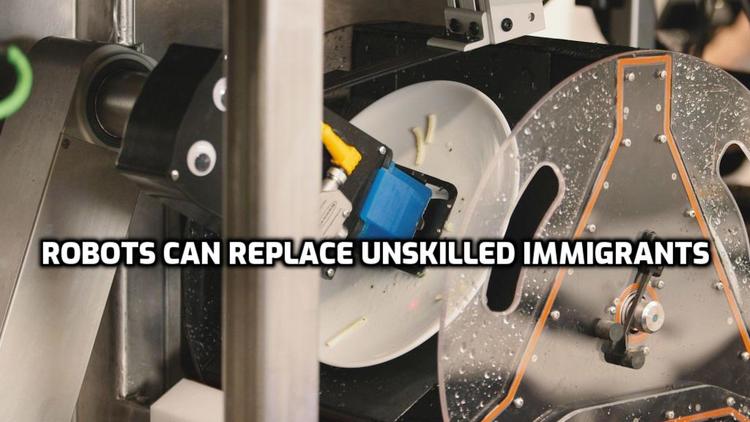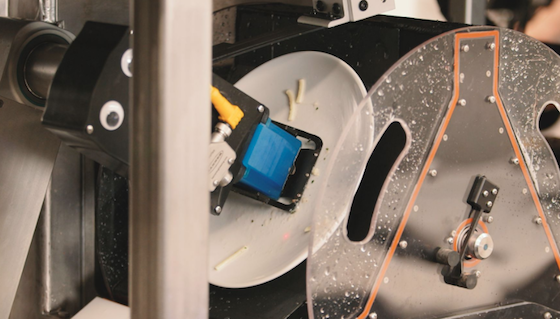


06/24/2019
We spoiled citizens apparently need foreigners to keep our plates clean.
But now a start-up company called Dishcraft is developing an automated machine that could make human dishwashers obsolete before long.
Below, the Dishcraft robot cleans noodles off a plate.

CNBC reports that the company has amassed $25 million in funding, which is another sign that investors believe the future will be automated. Too bad Washington isn’t paying attention to what’s happening in automation technology and how it will radically change the economy.
One aspect is that in a few years, there won’t be jobs for the thousands of illegal aliens now streaming across our open border because smart machines will be doing the unskilled, repetitive jobs more cheaply.
New robotic dishwasher for restaurants is taking the dirty work out of the kitchen, CNBC, June 18, 2019
More than half a million people work as dishwashers in the United States today, according to the most recent data from the Department of Labor. But that’s not nearly enough hands to keep cookware clean in the 660,755 establishments counted by the 2018 NPD Group Restaurant Consensus.
Enter Dishcraft, a start-up building a robotic dishwasher for commercial kitchens.
CEO and founder Linda Pouliot said that to figure out what tech could really do to help, she and CTO Paul Birkmeyer went to restaurants of every kind, volunteering to wash their dishes. Restaurateurs and managers were more than welcoming.
The co-founders discovered that work in the dish room is the same as it has been for decades — repetitive, frantic and physically punishing.
In a typical setup, it’s easy for a dishwasher to break a dish, get burned or slip and fall on the wet floor, Birkmeyer noticed. And at work it’s tempting for dishwashers to just put a rubber band on the overhead sprayers to keep hot water running all day, so they won’t have to keep reaching and grasping. Those conditions drive attrition.
“We found the problem is universal. It didn’t matter if you were the French Laundry, a hospital cafeteria or Chili’s; everyone is having a hard time hiring dishwashers,” Pouliot said.
Some restaurants turn to disposables or just deal with the expense of constant recruiting. But Dishcraft wants to give them a more sustainable, less costly option.
Dishcraft’s system uses four main elements: a dish drop, robotic dishwasher, rolling racks and the restaurant’s already-installed sanitizing machine.
At the dish drop, diners or bussers place dirty bowls and plates into a container that stacks and keeps track of them. When a rack is full, a light calls for a dish-room worker to roll it over to the robotic dishwasher, which loads them up automatically.
The washer picks up the plates and bowls with a magnet, cleans them with a rubber scraping wheel and rinses them with gray water (recycled water safe for cleaning purposes). Dishcraft’s robotic washer uses cameras, sensors and “dirt identification algorithms” to find and clean every last spot of food, even those that would be invisible to the naked eye.
Once they are washed, the machine stacks the plates and bowls into racks. A worker then places those racks in a sanitizer, standard equipment already used in commercial kitchens today. The sanitizer heats up the dishes, killing any remaining germs.
Restaurants love the system because “Robots do not call off, robots don’t take breaks, and robots do not take vacation,” Pouliot said. (Continues)